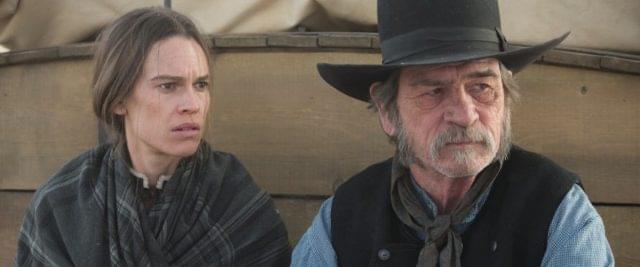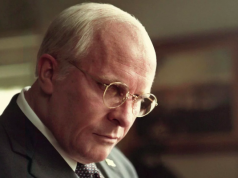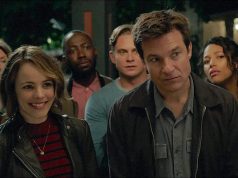
Tommy Lee Jones has acted in movies of many genres, but when he directs, he sticks to Westerns. His debut behind the camera was a 1995 TV movie, “The Good Old Boys,” followed 10 years later by an impressive theatrical feature, “The Three Burials of Melquiades Estrada.” Now comes “The Homesman,” a tonally disjointed, intermittently bearable drama (with awkward comic moments) that makes you wonder what TLJ ever saw in the Old West.
Based on a novel by Glendon Swarthout (author of “The Shootist”), “The Homesman” concerns one Mary Bee Cuddy (Hilary Swank), a headstrong, no-nonsense woman who farms her own land in the Nebraska Territory and wants very much to acquire a husband. Her reasons are more practical than sentimental, but it’s still humiliating when, in an early scene, she proposes marriage to a young man and is flatly rejected for being too plain. This is only the beginning of the indignities Miss Cuddy will suffer over the course of the film, and not the only time where it will be unclear whether we should find her misfortunes humorous or pitiful.
Three local women have gone tragically insane (one killed her own baby; another saw her children die of diphtheria) and need to be transported across the Iowa river so they can be returned to their families back East. Volunteering to drive the crazy wagon, Mary Bee goes around to collect the nutty wives from their sad husbands, locks ’em in for their own safety, and sets out on her journey. The film is now nearly half-over. None of the potentially interesting townspeople we’ve met will be seen again.
Cuddy soon meets George Briggs (Tommy Lee Jones), a cowardly claim-jumper and miscreant who’s been left to hang by some men he cheated. Briggs is initially a comic character, silly and loose-limbed — and completely wrong for Jones, whose stiff attempts at levity fall flat. (Here is an instance of an actor being miscast by himself.) Cuddy needs help supervising her wagonload of nutcases and Briggs needs a job, so they form an alliance. Road trip!
The “odd couple” differences between Cuddy and Briggs are the wearisome ones we’ve seen before, their rough friendship developing in the expected fashion. While individual scenes and sequences are good (including a run-in Briggs has with a hotelier played by James Spader), the film is rambling and unfocused, with little narrative momentum. It boasts a terrific cast — John Lithgow, Tim Blake Nelson, William Fichtner, Jesse Plemons, Meryl Streep — and then gives everyone a few scenes at most before the characters are discarded.
It’s light-hearted one minute, over-the-top tragic the next, and the line between the two is not always clear. The three insane women (played by Miranda Otto, Grace Gummer, and Sonja Richter) struck me as comical most of the time, rocking catatonically, stroking a doll’s hair, or screeching indecipherably, more like parodies of insanity than the real thing. Yet by all indications we’re supposed to be taking them seriously as pitiable creatures.
Jones and Swank seem invested in the material, and both seek to imbue their characters with realism and humanity (Jones does fine once Briggs stops being “funny”). But the film goes completely wrong in the last act, when Briggs becomes the focus and the story dawdles on interminably, unsure what point to make or how to make it. Like Tommy Lee Jones, most of us enjoy a good Western. This just isn’t one.
C- (2 hrs., 2 min.; )





